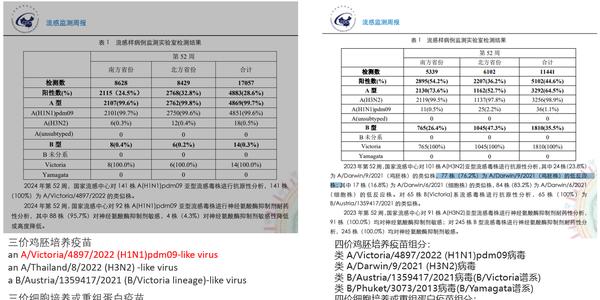Influenza Surge in China: Understanding the 2024 Flu Season
China’s CDC reports that over 99% of current influenza cases are H1N1 subtype A, with rising positivity rates. This year’s flu vaccine matches well with circulating strains, offering effective protection against the dominant virus.

As winter deepens in China, respiratory infections have entered their peak season, presenting unique characteristics and challenges for public health management.
The 2024 influenza season shows distinct patterns compared to previous years. According to China’s Center for Disease Control and Prevention (CDC), the overwhelming majority of cases - over 99% - are H1N1 influenza A. This represents a significant shift from the mixed pattern of influenza A and B strains seen in previous seasons.
A notable feature of this year’s outbreak is the excellent match between circulating viruses and vaccine strains. The H1N1 viruses identified are predominantly A/Victoria/4897/2022-like strains, which correspond well with current vaccine components. This alignment suggests higher vaccine effectiveness compared to previous seasons.
Symptoms typically include sudden onset of high fever, headache, muscle aches, and respiratory symptoms. Many patients report feeling dizzy, leading to public concern about potential new virus variants. However, medical experts confirm these are typical influenza symptoms rather than indicators of new strains.
The timing of this year’s outbreak is noteworthy. Using Beijing as an example, the peak season arrived later than usual, beginning in December. This timing coincides with the approach of the Chinese New Year holiday period, raising concerns about virus transmission during mass population movement.
For treatment, two primary antiviral medications are available: oseltamivir and baloxavir. Each works differently - oseltamivir prevents virus spread between cells, while baloxavir inhibits viral replication. Clinical guidelines recommend initiating antiviral treatment within 48 hours of symptom onset for optimal effectiveness.
Prevention strategies remain crucial. Beyond vaccination, public health experts recommend:
- Maintaining good hand hygiene with soap and running water
- Wearing masks in crowded public spaces
- Ensuring proper ventilation in indoor spaces
- Taking vitamin C supplements and maintaining a balanced diet
- Seeking medical attention promptly when symptoms appear
High-risk groups, including elderly individuals, young children, pregnant women, and those with underlying health conditions, should be particularly vigilant. For these populations, early intervention with antiviral medications may be especially important to prevent severe complications.
As China approaches its Spring Festival travel season, these preventive measures become increasingly critical. The combination of peak flu season and mass population movement creates optimal conditions for virus transmission. Understanding the characteristics of this year’s influenza outbreak and taking appropriate precautions will be key to managing public health during this challenging period.